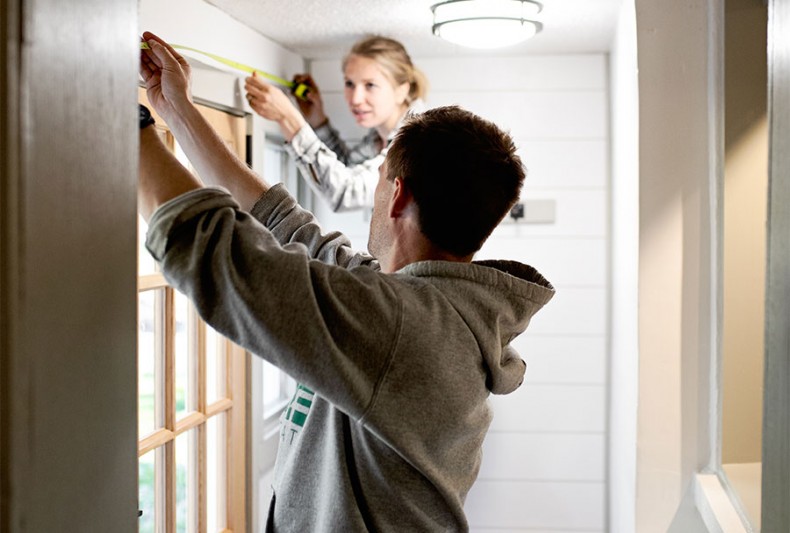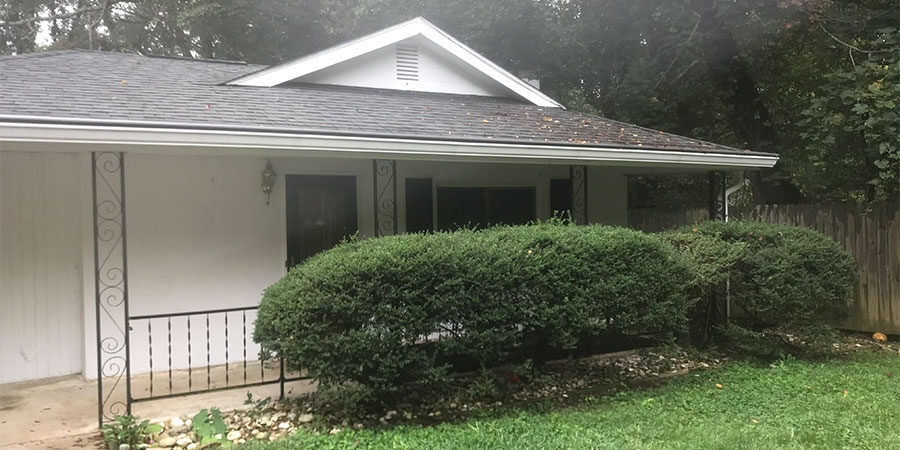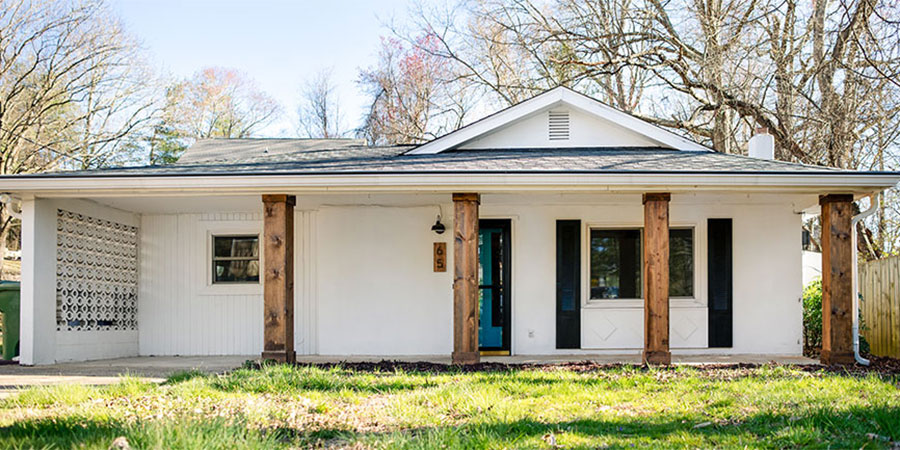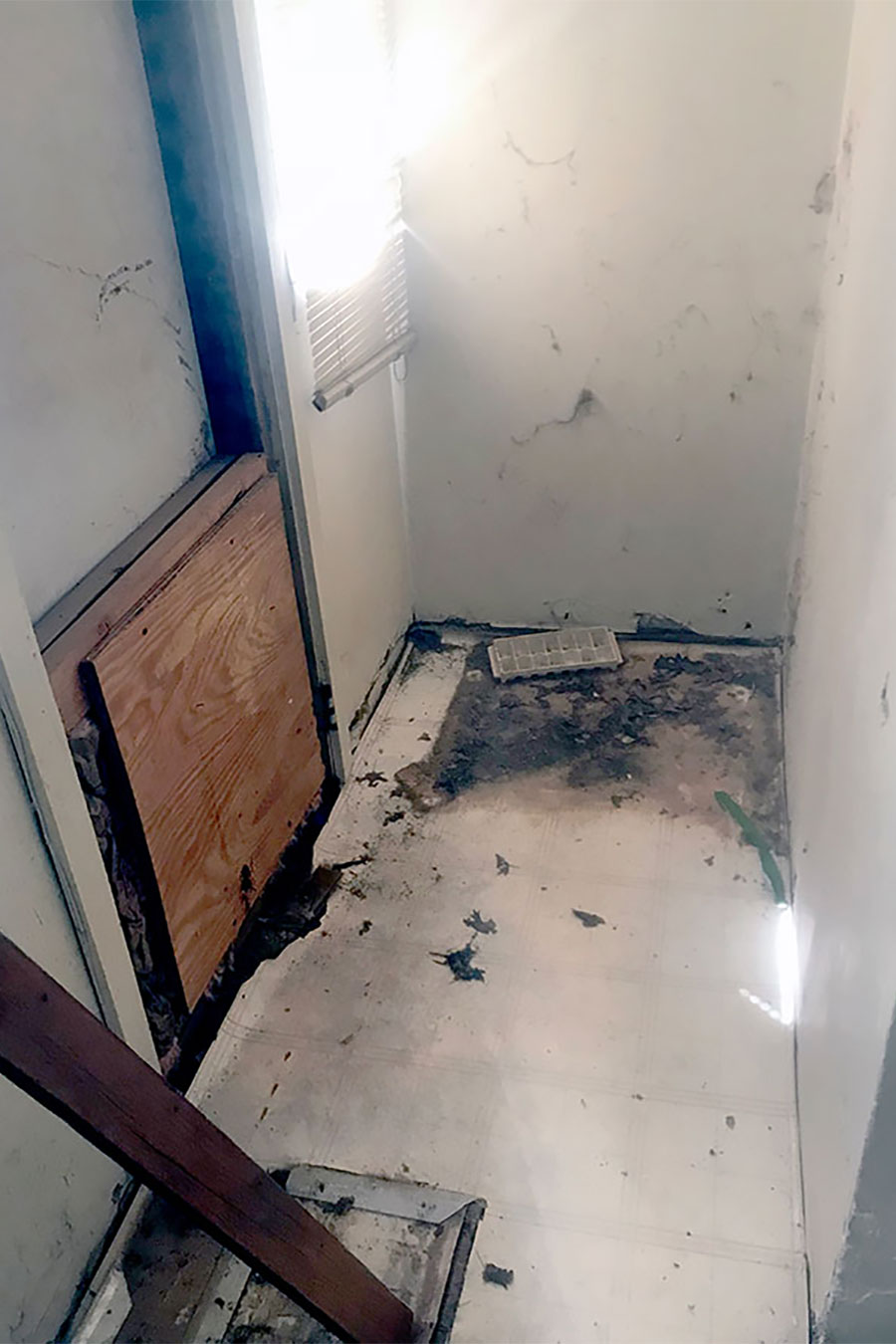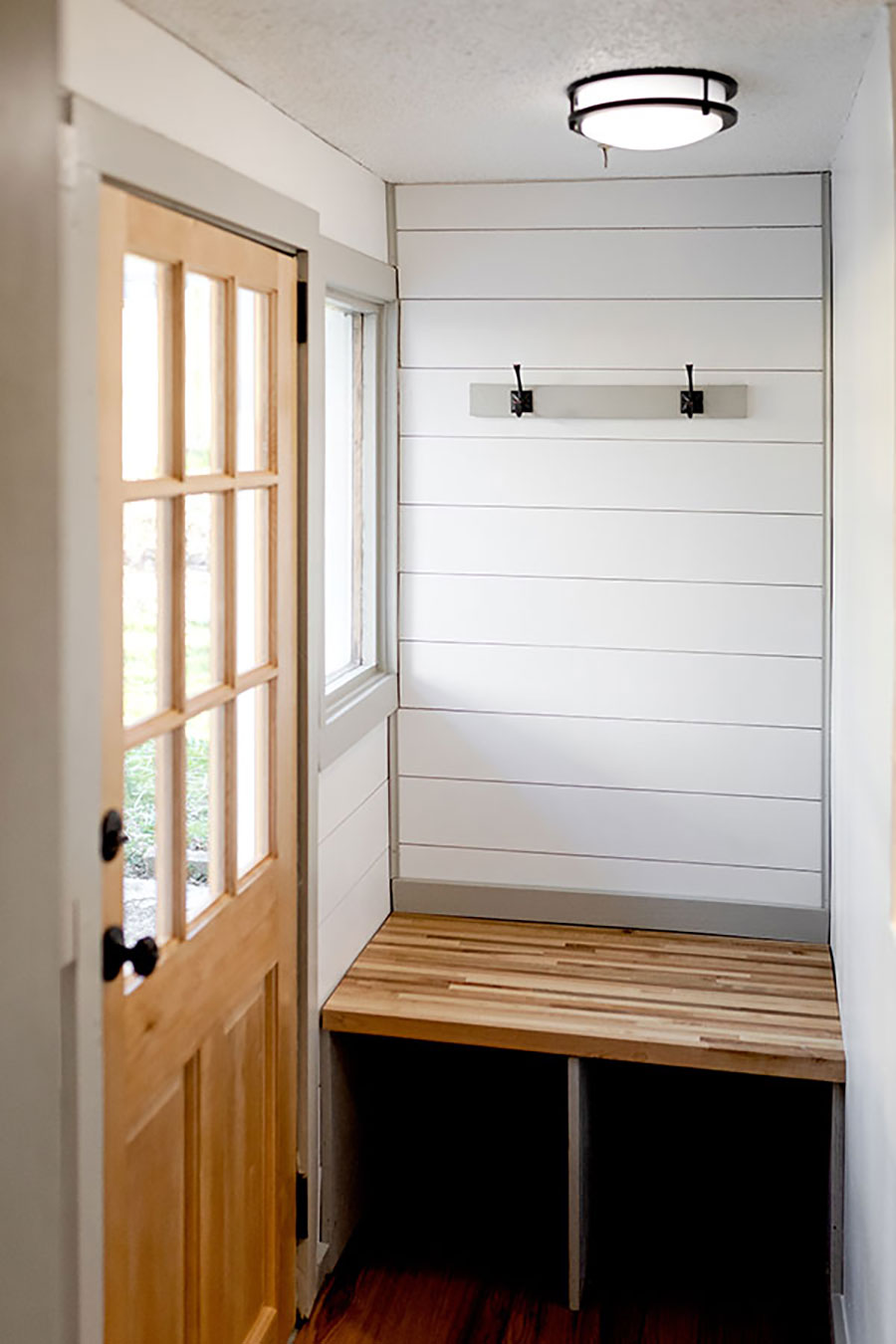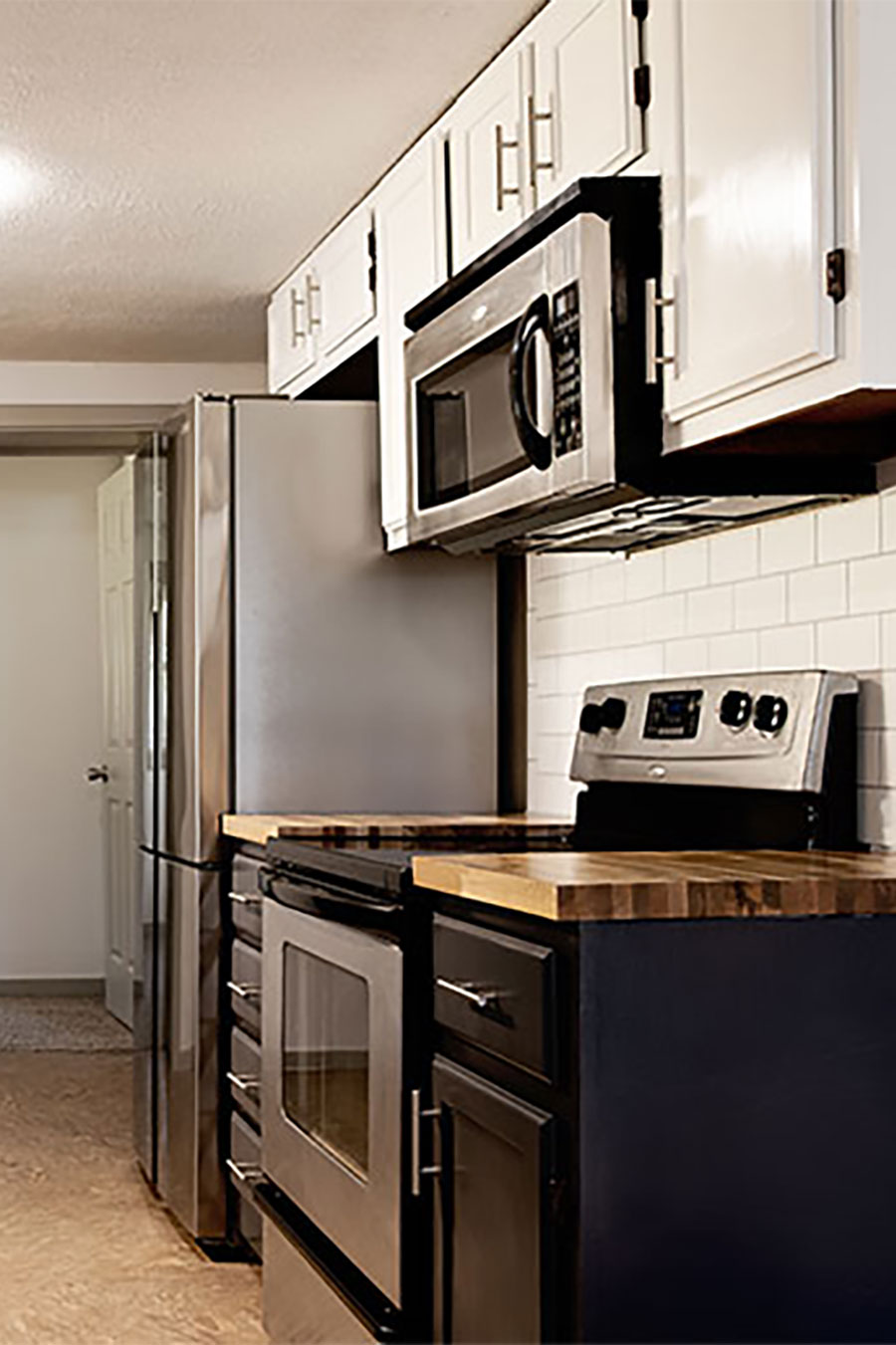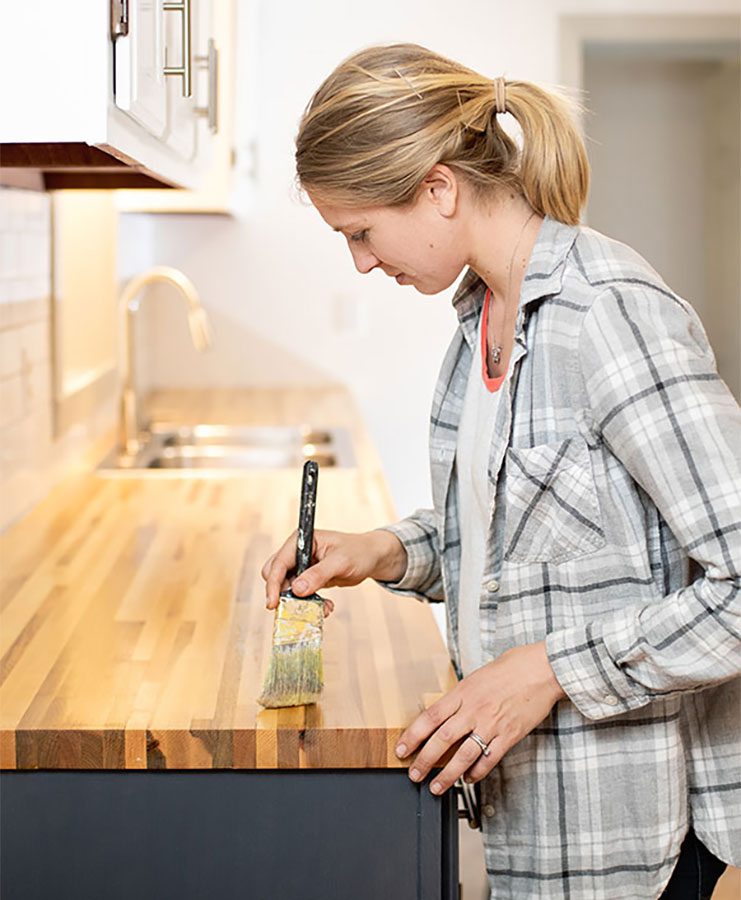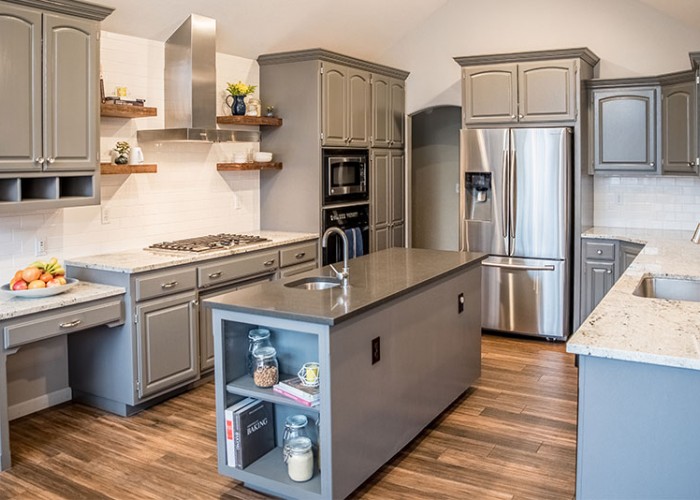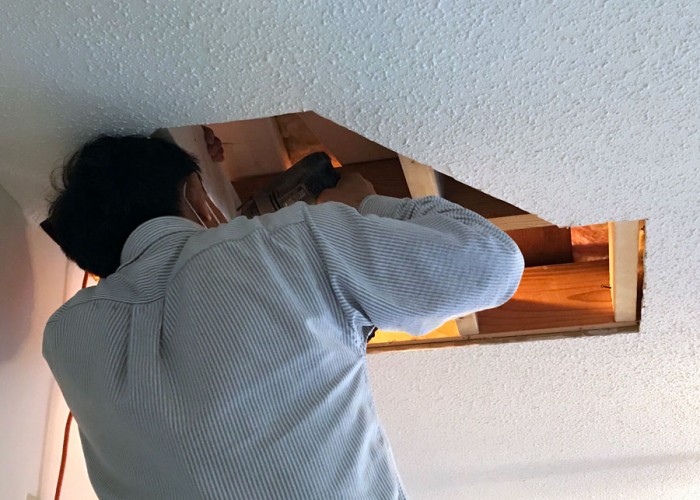House Flipping Pro Tips
The right improvements can make an old house feel new again
By Gordon Byrd"Flippers" Thomas and Hannah Gibson add the finishing touches to a remodeled mudroom. The couple revitalizes homes in western North Carolina. Photo by Revival Photograpy.
Walking into a project house, a fixer-upper, can seem like an overwhelming venture. Wood paneling may cover the walls up to the chair rails. The shag carpet may have trails like a well-worn path through the front lawn. Drab olive colored appliances squat on once-white, now beige linoleum floors; and brass light fixtures — seemingly caramelized with age — glow on peeling wallpaper.
These are just cosmetics, but they will determine whether a potential buyer is immediately in love — or immediately in disgust.
Hannah Gibson and her husband, Thomas, flip houses in western North Carolina, where the artisan-cottage-look or farmhouse-feel is the hot selling item for the housing market. Their advice, and some diligent legwork, can help a do-it-yourselfer save time and money in home improvement projects.
“Cosmetics sell the house,” Hannah says, smiling. “The ’70s haven’t come back around, and people write off a house because it is ugly, not just because it needs a new roof or foundation.”
Cosmetic transformations
The internet makes what might feel impossible to finish with these cosmetic transformations a doable project. Countless bloggers and YouTubers now teach step-by-step techniques for removing carpeting and installing clickable wood flooring, or painting a room with contrasting colors on walls.
“Painting is the easiest way to make huge changes, and anyone can paint,” Hannah advises. “With bloggers, you can let someone else do the hard work and paint first. Then you just look at their photos and decide if that is what you want. And do not be afraid of repainting. It’s not technical.”
Flooring is another simple change that is made easy with how-to videos and new flooring technologies. Sometimes, a homeowner can find beautiful heart pine flooring under their old carpet. Even when there is no hardwood under the carpet, refreshingly simple flooring installations are available for even the novice home improvers, and the variety of colors and patterns are endless.
“The legwork is almost done for you,” Hannah says of learning how to install flooring, with the online resource of free videos of other successful installations. “I have learned so much from YouTube,” she confesses.
Hannah continues with her own well-learned lesson, an old adage applicable to most any construction trade: “Measure twice, and cut once.”
Beyond painting and flooring, furniture can be an inexpensive transformation. Hannah, a mother of two young children, jokes, “You can have nice furniture when your kids move out. Second-hand couches with slip-cover and dark colors are the best for my family.”
She concludes that the universal appeal is the safest route (see sidebar above). Her final piece of advice when buying a project home is to not be afraid of the appearances, but to “see the bones of the house. The structure needs to be sound.”
The ‘bones’ of a house
When it comes to fixing the structure of a home, like the foundation, roof and subflooring, or removing a wall or chimney — even redesigning bathrooms or kitchens — a homebuyer will need to consult more than YouTube. Matthew Greene and Kevin Witmore, licensed contractors for Pembroke-based CSR Construction of NC, Inc., specialize in the structural construction and remodeling of homes.
Kevin stands in an open-concept home and expands his arms to show how the large space is made possible. “These days, most people are building new homes with pre-manufactured trusses that span these open spaces,” he explains.
During the mid-to-late 1900s, homes were built with several separate rooms instead of open spaces. The many-roomed home was popular and necessary for any house with a second story. Load-bearing walls divided up rooms on the first floor because the walls held up the ceiling and supported the second floor. A house built at this time would not have had the modern structural material available today.
Now, homes can enjoy a wide-open space concept without pillars or load-bearing walls dividing up the space, due to advances in building material technology. Long, strong beams, such as Laminated Veneer Lumber (LVL), can stretch across a living room and kitchen ceiling without a load-bearing wall cutting off one room from the other.
Kitchens and bathrooms
Matthew explains that the most common remodel is opening up these spaces and refitting the kitchen. Older kitchens were built differently. For example, a period kitchen might have made-to-order plywood cabinets with a tile countertop. Solid-surface countertops are “in” and the older tile countertops are “out.”
“It is in people to modernize,” Kevin observes. Kitchen remodels are mainly to modernize and to refit worn-out countertops or sagging cabinet doors.
Now, most cabinets are prefabricated with smaller, set measurements and fit together like blocks. Customized pantries with intricate shelving are another popular remodel that can become pricey. Kevin quips that the ’60s look is out-of-style, but the options today on Pinterest.com and Houzz.com are endless.
Homeowners also are keen on remodeling bathrooms. Kevin reels at a memory of shag carpeting in a bathroom. “Can you believe they would put that on floors that are always soaked?” he asks in horror.
Besides the look, rotten floors are the most common reason to redo a bathroom. But while CSR is repairing floors from a leaky sink, shower or toilet, they have been asked to change out the bathrooms’ fixtures for new popular designs. Jetted tubs and claw-foot baths are replacing dual purpose bath/showers in nearly every bathroom remodel.
Even though most common remodels are bathrooms and kitchens, the least-expensive remodels are living rooms and bedrooms, according to CSR.
Whether a fresh coat of paint or refitting a kitchen’s cabinets and countertops, home improvements can make a dwelling place more functional and habitable. And a happy home is worth every penny.
-
Flipping your house, room by room
-
Share this story:

